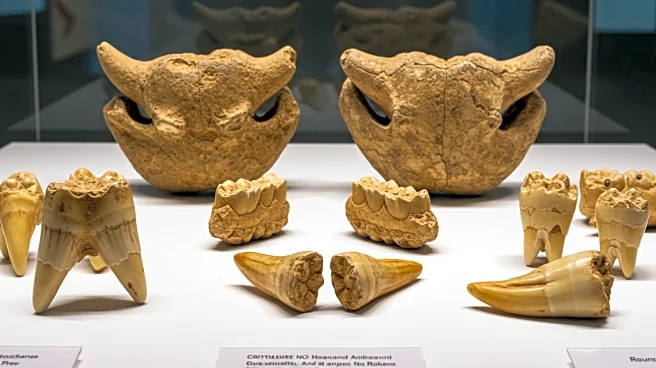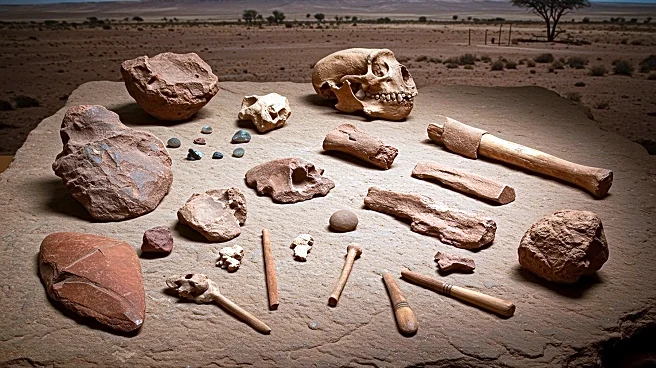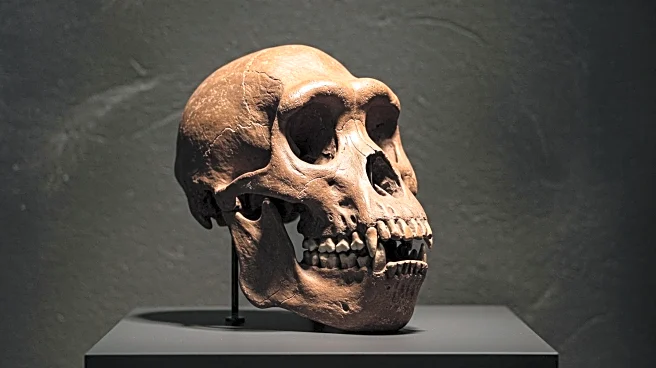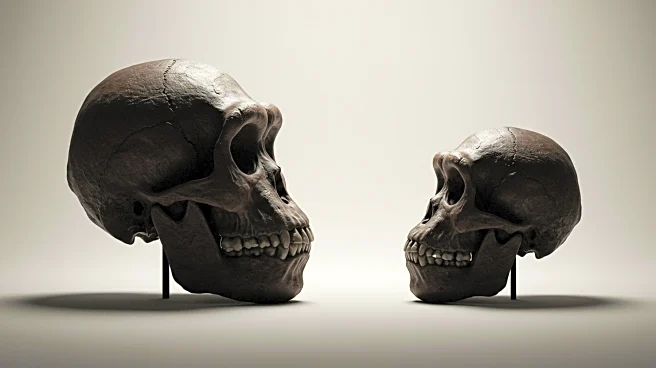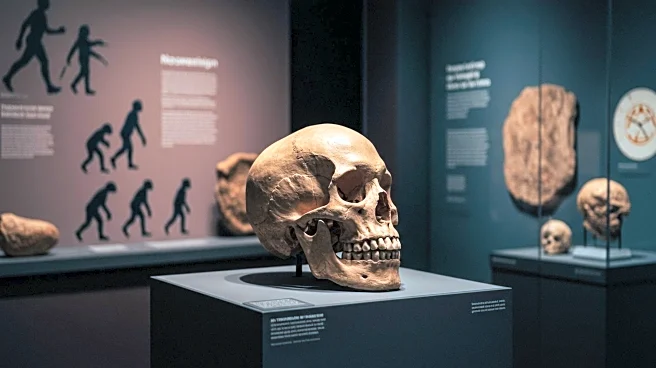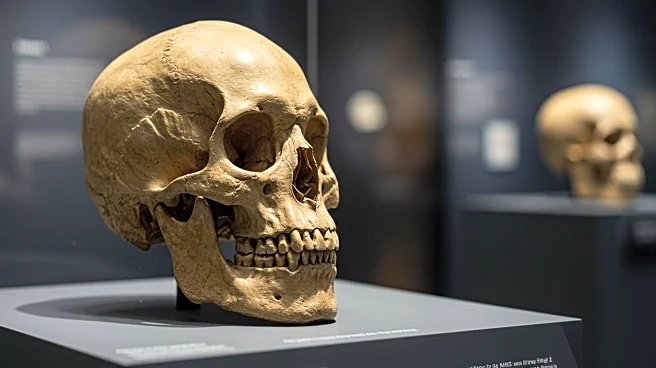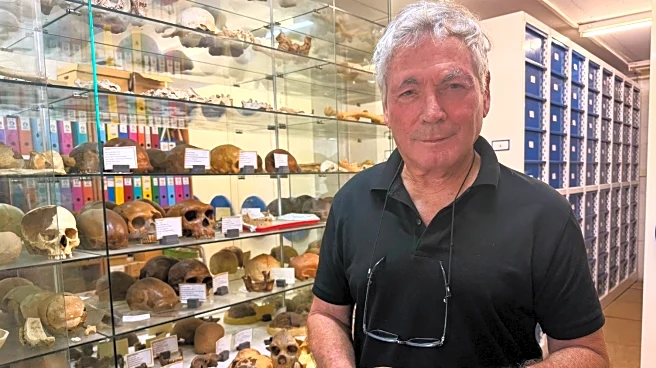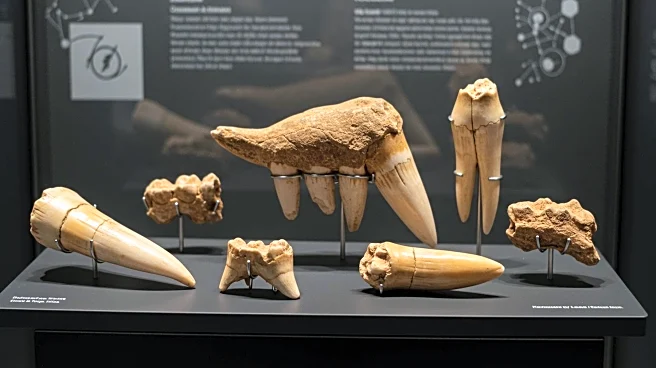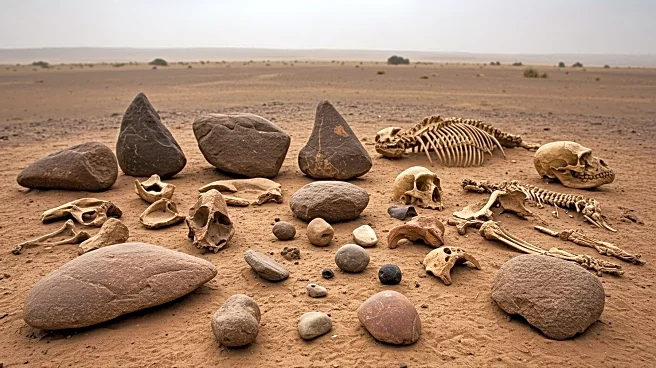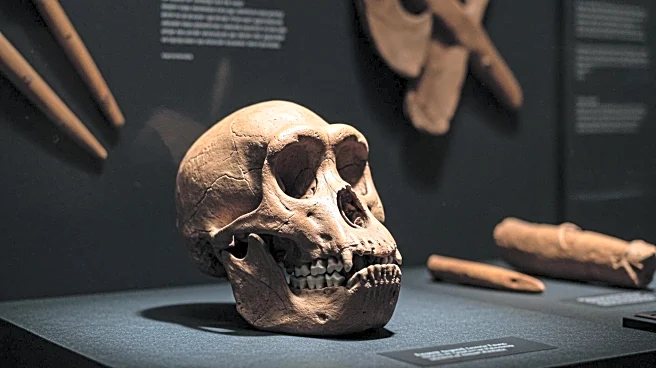What is the story about?
What's Happening?
Researchers have discovered 13 ancient teeth in Ethiopia, believed to belong to a previously unknown species of Australopithecus. These teeth, dated to the same period as the oldest known Homo specimens, suggest that Australopithecus and early Homo species coexisted up to 2.8 million years ago. This finding challenges traditional views of human evolution, which often depict a linear progression from apes to modern humans. The research, part of the Ledi-Geraru Research Project, highlights the complexity of human ancestry and the need for further fossil discoveries to understand the evolutionary relationship between these species.
Why It's Important?
The coexistence of Australopithecus and early Homo species in the same region suggests a more intricate evolutionary history than previously thought. This discovery could reshape our understanding of human evolution, indicating that multiple hominin species may have interacted and influenced each other's development. The findings emphasize the importance of continued paleontological research to uncover additional fossils that can provide deeper insights into the evolutionary pathways of early human ancestors.
AI Generated Content
Do you find this article useful?
